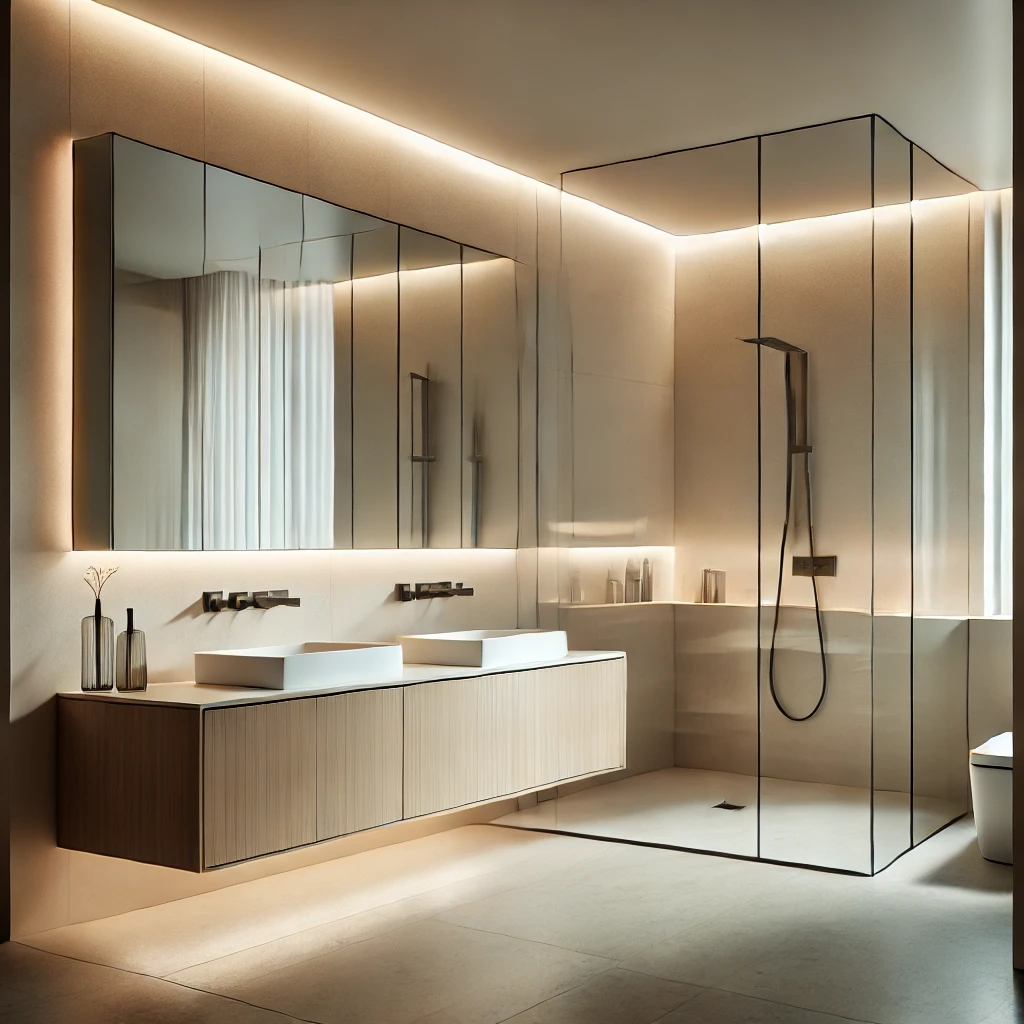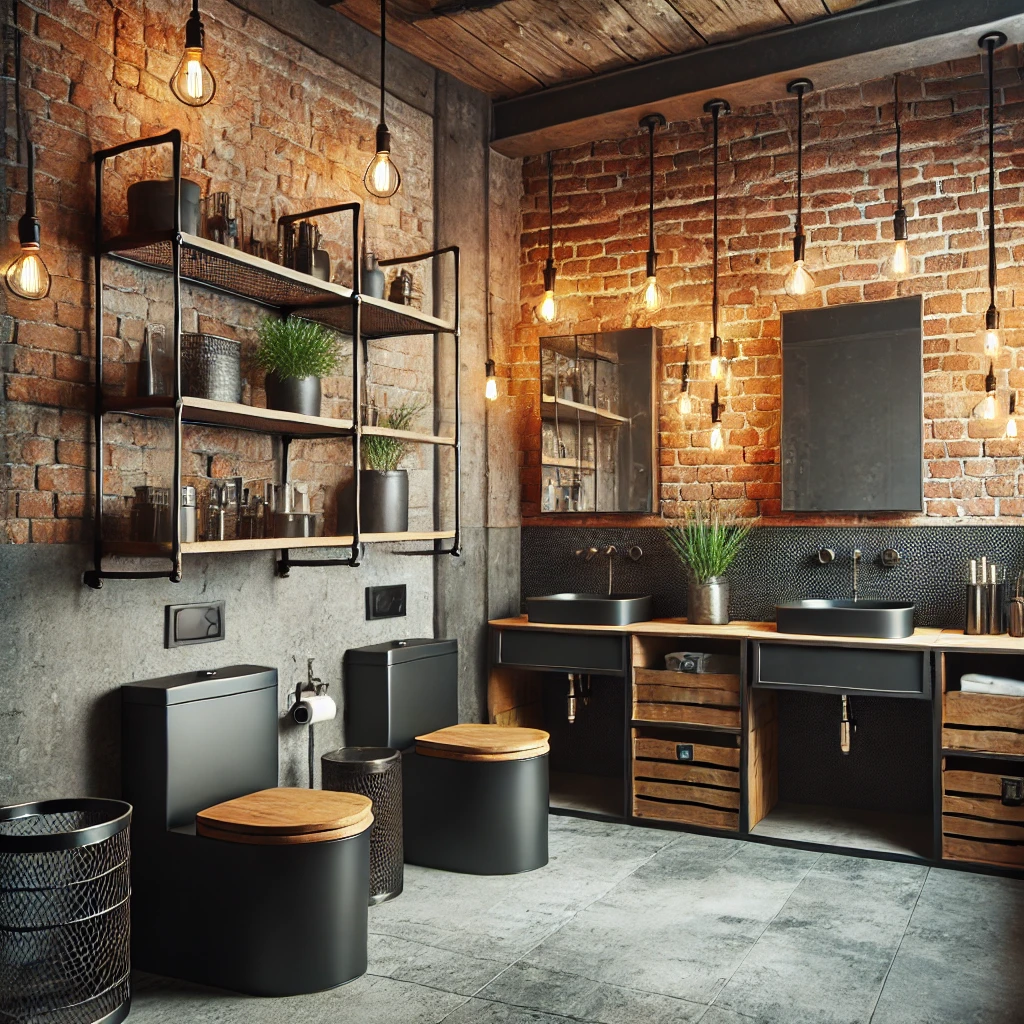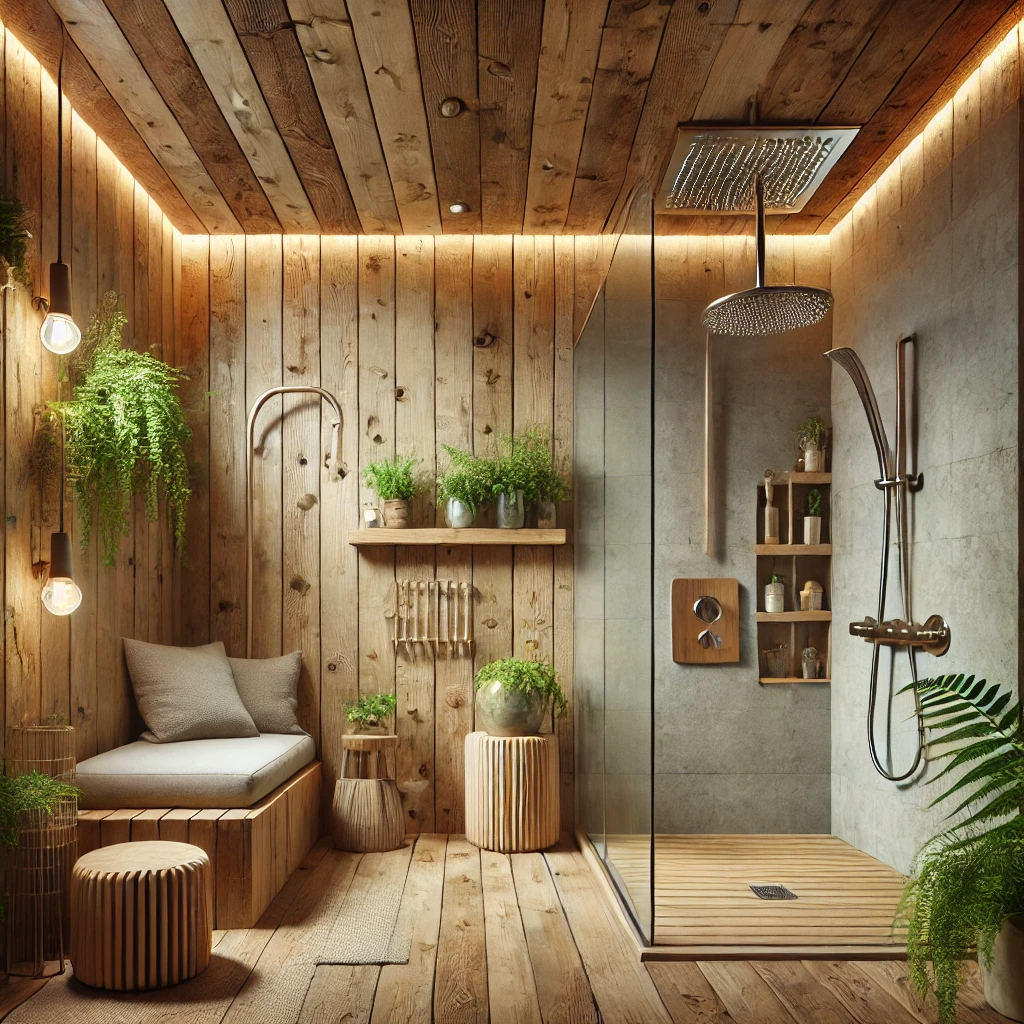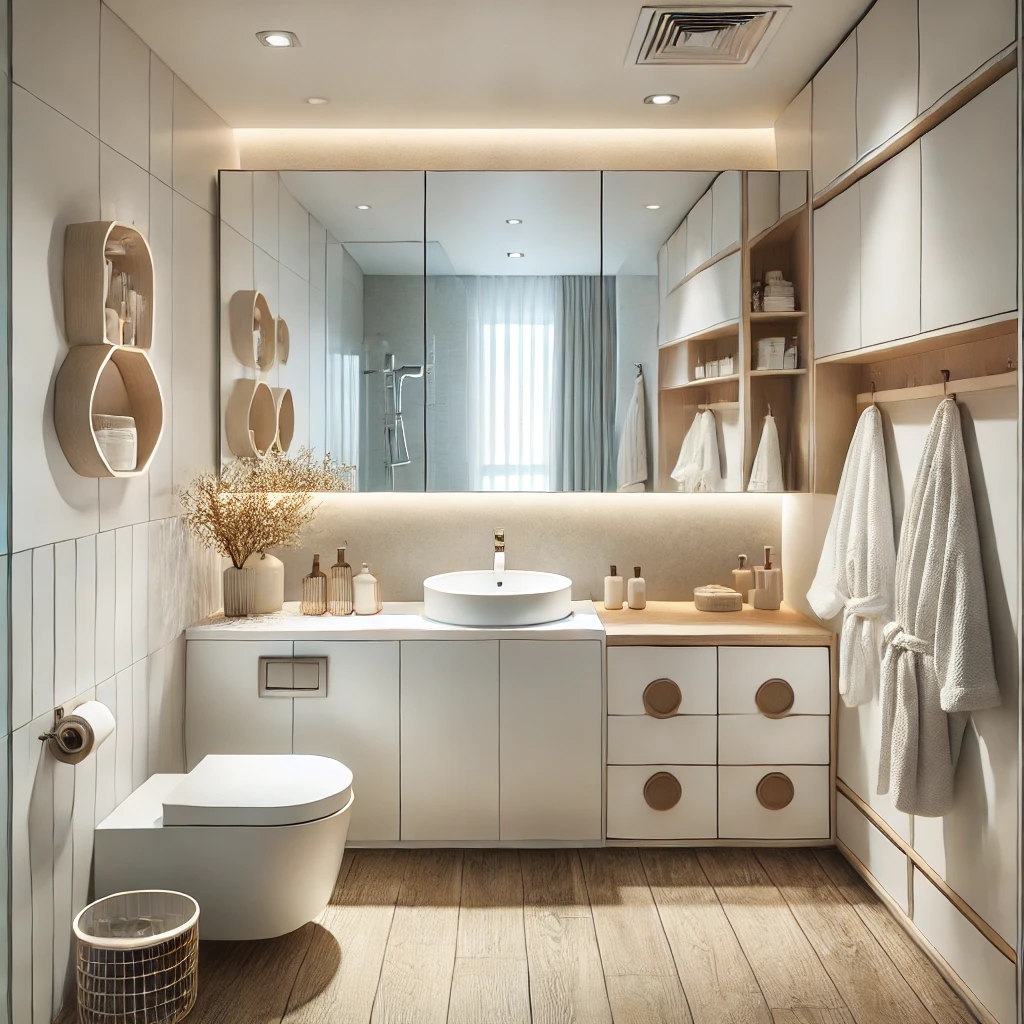Bathroom design plays a crucial role in modern homes, balancing aesthetics, functionality, and comfort. As one of the most frequently used spaces, a well-designed bathroom can significantly enhance the overall appeal and value of a home. Whether renovating an existing space or constructing a new one, understanding different bathroom design styles helps homeowners make informed decisions that align with their preferences and needs.
The Evolution of Bathroom Design
Historically, bathrooms were purely utilitarian spaces focused on hygiene. However, with advancements in architecture and interior design, bathrooms have evolved into personal sanctuaries. Over time, luxurious features such as heated flooring, high-end fixtures, and spa-like amenities have become popular, reflecting changing trends in home improvement.
Modern bathrooms are designed to be both functional and visually appealing, integrating innovative technologies, smart storage solutions, and energy-efficient fixtures. The shift from traditional layouts to more open and customized designs showcases the importance of personalization in contemporary bathroom design. Today, homeowners prioritize aesthetics as much as efficiency, seeking to create a relaxing retreat within their own homes.
Key Elements of a Well-Designed Bathroom
Every bathroom, regardless of its size, requires a harmonious blend of essential elements to create a cohesive and stylish environment. These elements define the usability, durability, and aesthetic appeal of the space.

1. Layout and Space Utilization
The layout determines how efficiently a bathroom functions. Compact spaces benefit from smart storage solutions such as floating vanities, built-in shelves, and wall-mounted fixtures. Larger bathrooms can incorporate separate zones for showers, bathtubs, and dressing areas to enhance convenience and luxury.
The placement of plumbing fixtures, storage, and lighting should facilitate ease of movement while maintaining an aesthetically pleasing arrangement. Popular layouts include:
- Single-wall layout: Ideal for small bathrooms, aligning all fixtures along one wall.
- Galley-style layout: Efficient for narrow spaces, placing sinks and toilets on opposite walls.
- L-shaped and U-shaped layouts: Suitable for larger bathrooms, offering distinct zones for showering, grooming, and relaxation.
2. Materials and Finishes
Choosing the right materials enhances both aesthetics and durability. Popular options include:
- Tiles: Ceramic, porcelain, and natural stone tiles offer durability and a wide range of designs. Porcelain tiles, in particular, are moisture-resistant and low-maintenance, making them a preferred choice.
- Countertops: Quartz, marble, and granite provide elegance and resilience. Quartz is highly durable and resistant to stains, while marble exudes luxury.
- Cabinetry: Waterproof materials like marine plywood or treated wood ensure longevity. Laminates and high-gloss finishes provide additional protection against moisture and wear.
The selection of finishes should complement the overall design theme, whether it’s a glossy modern look or a rustic matte finish.
3. Lighting Design
Proper lighting enhances both functionality and ambiance. A combination of task lighting (for mirrors), ambient lighting (for general illumination), and accent lighting (for decorative elements) creates a balanced atmosphere. LED fixtures are an energy-efficient choice that complements modern bathroom aesthetics.
- Task Lighting: Bright and focused lighting around mirrors for grooming activities like shaving and makeup application.
- Ambient Lighting: Soft overhead lighting to create an inviting and warm atmosphere.
- Accent Lighting: Decorative sconces, recessed lights, or LED strips that enhance architectural elements.
4. Ventilation and Climate Control
Effective ventilation prevents moisture buildup and mold growth, preserving the integrity of materials. Options include:
- Exhaust fans to improve air circulation and remove humidity.
- Windows and skylights for natural ventilation and light, reducing reliance on artificial lighting.
- Underfloor heating for enhanced comfort in colder climates, preventing cold surfaces and condensation buildup.
Read too: 20 Organic Bathroom Decor Ideas for a Serene and Eco-Friendly Retreat
Popular Bathroom Design Styles
Different bathroom design styles cater to various tastes, lifestyles, and home aesthetics. Selecting a style that aligns with personal preferences enhances the overall ambiance and functionality of the space.
1. Modern Minimalist

Characterized by clean lines, neutral colors, and uncluttered spaces, modern minimalist bathrooms focus on simplicity and efficiency. Features often include:
- Floating vanities and wall-mounted toilets to maximize floor space.
- Frameless glass showers for a seamless and open look.
- Matte or gloss finishes in monochrome color schemes with occasional wood or metallic accents.
2. Classic Traditional

Traditional bathrooms exude elegance with ornate details, rich materials, and vintage fixtures. Key elements include:
- Clawfoot bathtubs and pedestal sinks that create a timeless appeal.
- Brass or gold-accented faucets and handles for a luxurious touch.
- Wainscoting, decorative moldings, and floral patterns for added charm.
3. Rustic Farmhouse

This style blends natural textures with cozy aesthetics, creating a warm and inviting space. Defining features are:
- Wooden vanities and reclaimed wood elements that introduce a natural touch.
- Vintage-inspired fixtures with a weathered or aged finish.
- Soft, earthy color palettes with neutral tones, often incorporating beige, brown, and soft greens.
4. Industrial Chic

Inspired by urban lofts, industrial-style bathrooms showcase raw materials and edgy aesthetics. Common elements include:
- Exposed brick or concrete walls, contributing to a rugged appeal.
- Black metal fixtures and open shelving to add contrast and practicality.
- Edison-style light bulbs and rustic wood accents that complement the industrial theme.
5. Scandinavian Serenity

Minimalist yet cozy, Scandinavian bathrooms emphasize light, simplicity, and functionality. This style incorporates:
- Light-colored wood, neutral tones, and soft textures for a calming effect.
- Smart storage solutions like floating shelves and under-sink organizers for clutter-free spaces.
- Soft lighting, candles, and minimal décor to enhance relaxation.
Smart Technology in Bathroom Design

Technology has revolutionized bathroom design, offering convenience and efficiency. Smart innovations include:
- Touchless faucets for hygiene and water conservation, reducing the spread of germs.
- LED mirrors with anti-fog features for improved visibility after showers.
- Smart toilets with self-cleaning functions, heated seats, and bidet options.
- Voice-activated lighting and temperature control to enhance the user experience.
Sustainable and Eco-Friendly Bathroom Designs

Sustainability is a growing focus in bathroom design, with eco-friendly features reducing environmental impact while enhancing energy efficiency. Key sustainable elements include:
- Low-flow toilets and faucets to conserve water and reduce waste.
- Recycled or reclaimed materials for countertops, cabinetry, and flooring to minimize environmental impact.
- Energy-efficient lighting such as LED bulbs to cut down on electricity consumption.
Small Bathroom Design Strategies

Designing a small bathroom requires creative solutions to maximize space without compromising style. Effective strategies include:
- Using large mirrors to create an illusion of spaciousness by reflecting light.
- Opting for wall-mounted fixtures like floating sinks and shelves to free up floor space.
- Incorporating multifunctional furniture such as vanity cabinets with hidden storage to maximize utility.
Conclusion
Bathroom design is an evolving field that integrates aesthetics, functionality, and innovation. By selecting the right bathroom design styles, materials, and layout, homeowners can create a space that reflects their personality and enhances daily comfort. Whether opting for a luxurious spa-inspired retreat or a simple, efficient layout, thoughtful design choices can transform any bathroom into a stylish and practical sanctuary.


